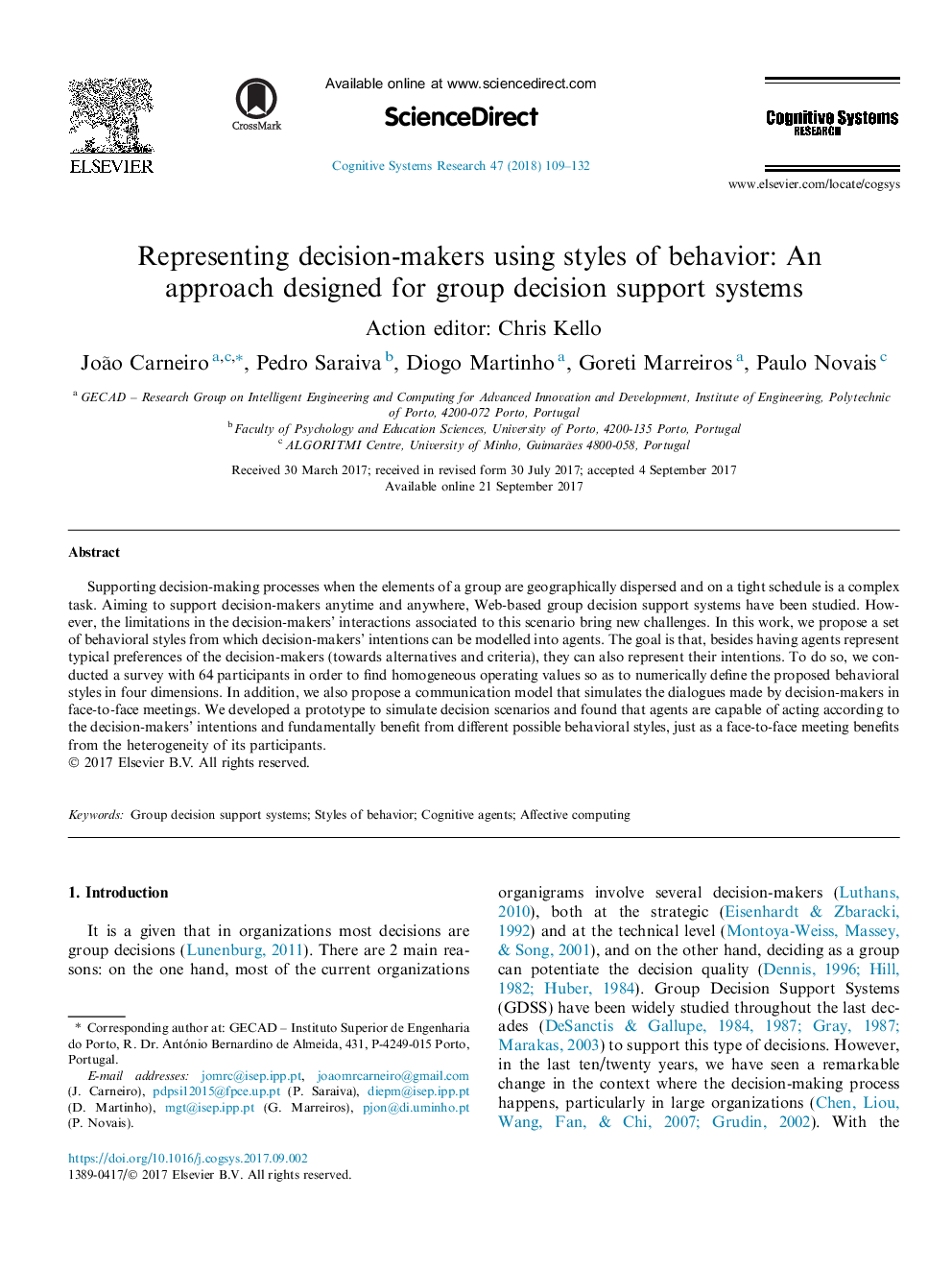| Article ID | Journal | Published Year | Pages | File Type |
|---|---|---|---|---|
| 4942330 | Cognitive Systems Research | 2018 | 24 Pages |
Abstract
Supporting decision-making processes when the elements of a group are geographically dispersed and on a tight schedule is a complex task. Aiming to support decision-makers anytime and anywhere, Web-based group decision support systems have been studied. However, the limitations in the decision-makers' interactions associated to this scenario bring new challenges. In this work, we propose a set of behavioral styles from which decision-makers' intentions can be modelled into agents. The goal is that, besides having agents represent typical preferences of the decision-makers (towards alternatives and criteria), they can also represent their intentions. To do so, we conducted a survey with 64 participants in order to find homogeneous operating values so as to numerically define the proposed behavioral styles in four dimensions. In addition, we also propose a communication model that simulates the dialogues made by decision-makers in face-to-face meetings. We developed a prototype to simulate decision scenarios and found that agents are capable of acting according to the decision-makers' intentions and fundamentally benefit from different possible behavioral styles, just as a face-to-face meeting benefits from the heterogeneity of its participants.
Related Topics
Physical Sciences and Engineering
Computer Science
Artificial Intelligence
Authors
João Carneiro, Pedro Saraiva, Diogo Martinho, Goreti Marreiros, Paulo Novais,
